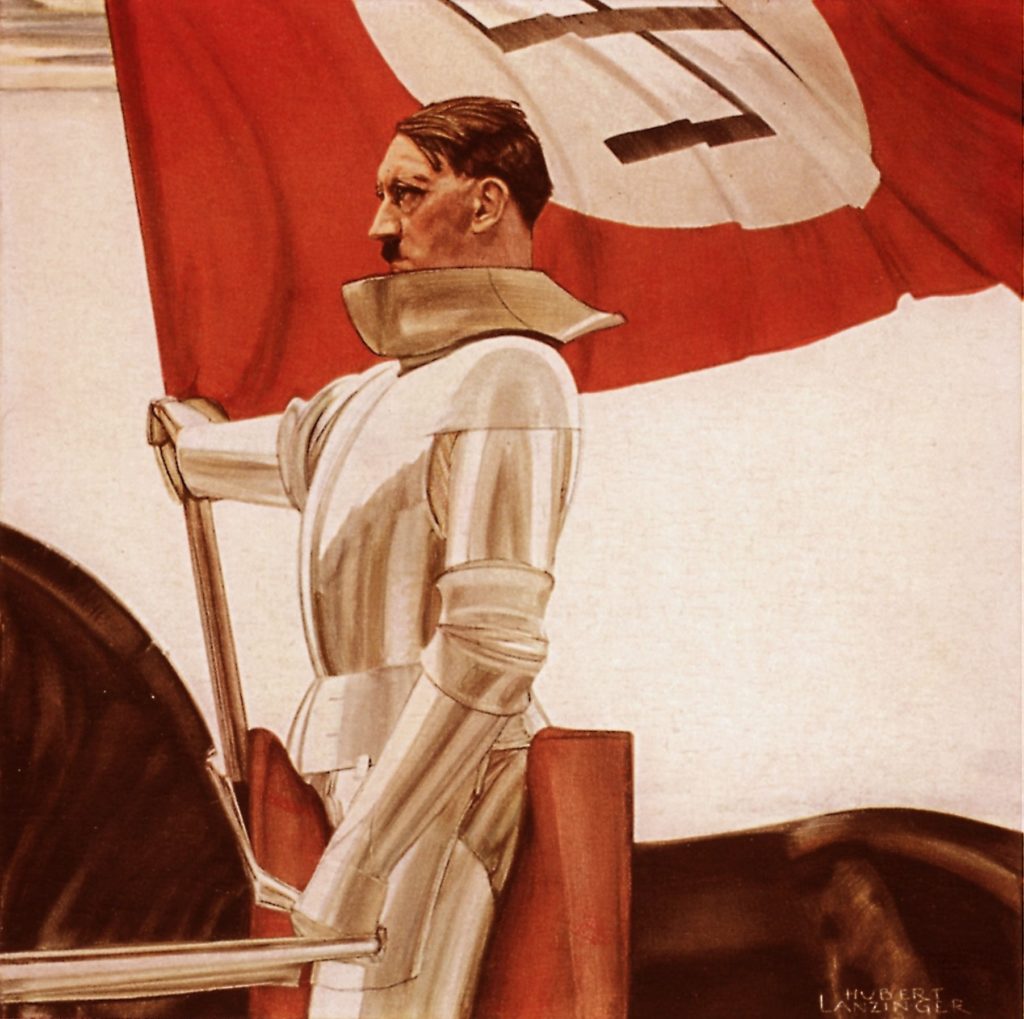Nazi Propaganda Art

This is just downright fascinating.
In the final days of the Second World War, a train loaded with relics of the collapsing Third Reich was speeding toward the Czech border when American pilots, flying P-47 fighters, spotted it and opened fire. The train ground to a halt in a forest, where German soldiers spirited the cargo away. They were pursued, not long afterward, by Gordon Gilkey, a young captain from Linn County, Oregon, who had been ordered to gather up all the Nazi propaganda and military art he could find. Gilkey tracked the smugglers to an abandoned woodcutter’s hut, where he pried up the floorboards and found what he was looking for: a collection of drawings and watercolors belonging to the German military’s high command. The cache had survived the strafing, only to be afflicted by mildew and a family of hungry mice. “They had eaten the ends off many pictures, large holes in a few, and gave all the cabin pictures an uneven deckle edge,” Gilkey wrote.
Two years later, after Gilkey completed his mission, he put the art he had recovered—thousands of pieces of it—on a ship bound for the United States. Today, one of the world’s largest collections of Nazi propaganda sits in a climate-controlled warehouse at Fort Belvoir, in northern Virginia. Much of it is virulent; most of it is never seen by the public.
Fort Belvoir is home to the 29th Infantry Division and also to the National Geospatial-Intelligence Agency. It is also home to the U.S. Army Center of Military History, which maintains the Nazi art, along with thousands of other relics of wars past. One afternoon, before the pandemic struck, I drove inside the base to a cavernous warehouse where the collection is stored. It was like prying open a time capsule from a very dark time.
…
All propaganda is meant to obscure the truth, but two paintings inadvertently highlight the decline of the Nazi project. The first, “Hitler at the Front,” was painted by Emil Scheibe in 1942, about a year after Hitler launched his titanic, megalomaniacal invasion of the Soviet Union. It shows a buoyant Führer surrounded by a throng of German soldiers—young, well-scrubbed Aryans gazing at him in adoration. The second work—“East Front Fighters,” by Wilhelm Sauter—was painted two years later, when the Nazis were being rolled back by the Soviet Army. The soldiers in this canvas are exhausted and battered, if still unbowed. The message to Germans is clear: The war is tougher than we thought, but our soldiers are indomitable. Not long afterward, Hitler killed himself, and the Nazi regime imploded.
Someday, we may see the “art” of Jon McNaughton the same way.


